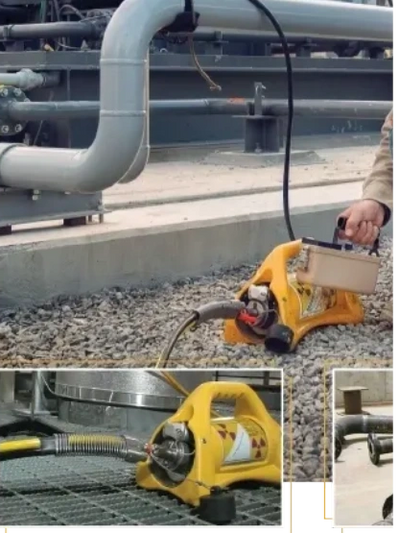Visual testing (VT) SERVICES

Introduction
Visual Testing (VT), also known as Visual Inspection, is a non-destructive testing method that relies on direct visual observation to assess the condition of a material or component. It involves a thorough visual examination of the surface and sometimes the internal features of an object to detect surface defects, irregularities, and anomalies. VT utilizes the human eye, aided by various tools such as magnifiers, borescopes, or cameras, to inspect and evaluate the material or component.
Application:
Visual Testing is widely used across industries such as manufacturing, construction, aerospace, automotive, and infrastructure. It is applicable to a broad range of materials and components. VT is used for various purposes, including quality control, maintenance inspections, weld inspections, dimensional measurements, surface condition assessments, and identification of surface defects like cracks, corrosion, leaks, and wear.
Standard Code Reference:
While there are no specific standard codes exclusively for visual testing, visual inspection practices are often referenced in industry standards and codes related to specific applications. For example:
- ASME Section V: Non-Destructive Examination (NDE) requirements in Boiler and Pressure Vessel Code.
- API 570: Piping Inspection Code - Inspection, Repair, Alteration, and Rerating of In-Service Piping Systems.
- AWS D1.1: Structural Welding Code - Steel.
- ASTM E2500: Standard Guide for Specification, Design, and Verification of Pharmaceutical and Biopharmaceutical Manufacturing Systems and Equipment.
Advantages:
- Real-Time Evaluation: VT provides immediate feedback, allowing for on-the-spot assessments and decision-making during inspections.
- Cost-Effective: VT is generally a low-cost inspection method, as it does not require specialized equipment or consumables beyond basic tools and visual aids.
- Wide Applicability: VT can be applied to various materials, surfaces, and components, making it versatile and accessible for a range of industries and applications.
- Non-Invasive: Visual inspection does not alter or damage the material or component being inspected, making it a non-invasive testing method.
Limitations:
- Subjectivity: Visual testing relies on the interpretation and judgment of the inspector, which may introduce some subjectivity and variability in the assessment process.
- Limited Detection Depth: VT is primarily focused on surface-level defects and may not detect internal or subsurface defects.
- Limited Accessibility: Some areas or components may be challenging to access visually, especially in complex structures or confined spaces.
- Environmental Factors: Visual inspection may be influenced by external factors such as poor lighting conditions, extreme temperatures, or obstructions that can hinder the inspector's ability to detect defects accurately.
While visual testing is a valuable inspection method, it is important to consider its limitations and complement it with other non-destructive testing techniques for a more comprehensive evaluation when necessary.
The specific application, industry, and relevant codes or standards should be consulted for comprehensive guidelines and requirements for visual testing in a particular context.
Copyright © 2024 Brotherhood Technical Services Company - All Rights Reserved.
Powered by BTECH
This website uses cookies.
We use cookies to analyze website traffic and optimize your website experience. By accepting our use of cookies, your data will be aggregated with all other user data.